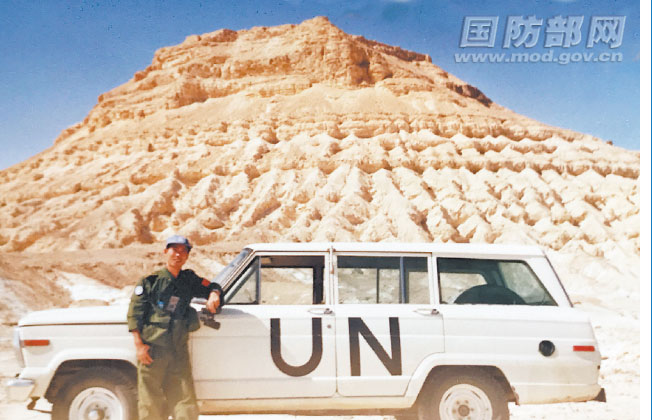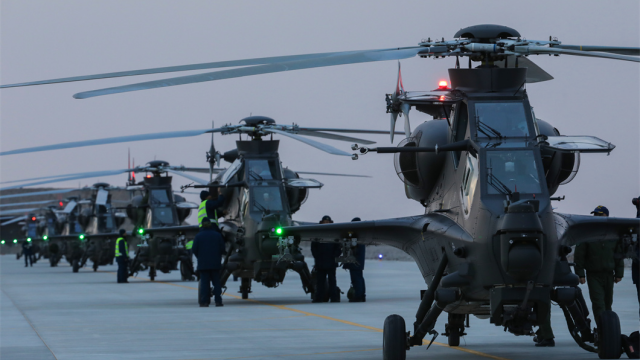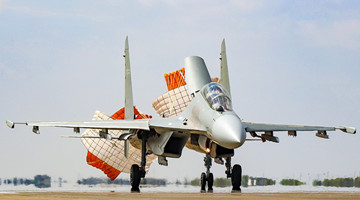
By Xu Nanfeng, a UNMO from the PLA of the first batch
Five Chinese military members, one of whom was me, were dispatched to the United Nations Truce Supervision Organization (UNTSO) as UN Military Observers (UNMOs) in April of 1990. This marked the beginning of China’s participation in the UN peacekeeping operations. Even today, thirty years later, detailed memories of the history-making experience are still vivid and alive in my mind.
The five of us were divided in two groups after joining the UNTSO. Two buddies and I were in the Observer Group Egypt (OGE), mainly performing missions of guarding garrison posts, patrol, and monitoring ceasefires on the Sinai Peninsula. The other two were incorporated into Observer Group Golan-Damascus (OGG-D) in Syria, mainly responsible for providing administrative and logistical support to the observers stationed in the Golan Heights. The two groups would take a rotation after half a year.
The OGE has deployed six sentry posts all through the Sinai Peninsula. The natural conditions therein are quite complex along with the severe weather in the endless desert, and its road network was badly damaged. In addition, there were about a million landmines left on this land after several Middle East wars.
I felt the risk during the first patrol mission in the vicinity of sentry posts. You had to passing through land forms of various kinds like hills, ravines, slopes and pits all the way, and the difficulty of driving can thereby be anticipated. Meanwhile, you could see anti-tank mines half exposed on both sides of roads now and then.
I was told that only by following the ruts and special markers drawn on the sketches, could the maximum safety be guaranteed. However, these are not necessarily 100% reliable since frequent sandstorms and floods could bury the ruts, changing the landforms to a certain degree.
On May 27, 1990, I was ordered to patrol along Route 4-1 of El Arish Sentry Post, which had long been cut into sections by floods. To complete the patrol, I need to make a detour by going through the desert, where the ruts that could have given directions disappeared soon after I entered the desert.
After determining the approximate direction with the help of maps, compass and distant mountains, I continued to drive forward, encountering two suspected minefields and fine sand belts on the way. The worries of bumping into mines or getting trapped in sand belts made me constantly nervous. Fortunately, I finally managed to cross the desert. Later, I learned that this route had disoriented many observers.
In less than two months, I got promoted from a trainee observer to a senior observer in charge of sentry posts, setting a new record for the promotion of UNMOs with the UNTSO at that time. A foreign UNMO told me following my promotion, “everyone looked at you critically at the beginning due to unfamiliarity, but you have proved the strength of the Chinese servicemen in your action.”
He was right. Thirty years ago, the level of interaction between the Chinese military and the militaries of other countries was not comparable to that of today. UN peacekeeping operations were a brand new field to Chinese soldiers at that time, and correspondingly the Chinese servicemen were unfamiliar to the UN peacekeeping forces too.
Therefore, the five of us were eager to make use of various opportunities to promote exchanges with foreign military counterparts, to increase mutual trust, and to resolve doubts in a targeted manner, while performing tasks.
The UNMOs from various countries stationed in sentry posts were required to take turns to cook. When it was our turn, we would carefully prepare to let our foreign partners taste the Chinese flavor. At the table, we talked from food to culture, from China to the world, and from war to peace. Over time, we have become good friends with our partners in the post, and they have also deepened their understanding of the Chinese troops.
There is a sign pole erected at St. Catherine Sentry Post, on which multiple nameplates indicating country names and distances have been nailed, witnessing the efforts of peacekeepers from various countries input for peace.
Before leaving the Sinai Peninsula, I cut a rectangular arrow out of the aluminum shell of a pop can, wrote “BEIJING CHINA 7500KM” on it, and nailed it firmly onto the sign pole towards Beijing. The Chinese mark has been engraved on the Sinai Peninsula and Chinese peacekeepers will also be remembered by the members in the UN peacekeeping family ever after.









